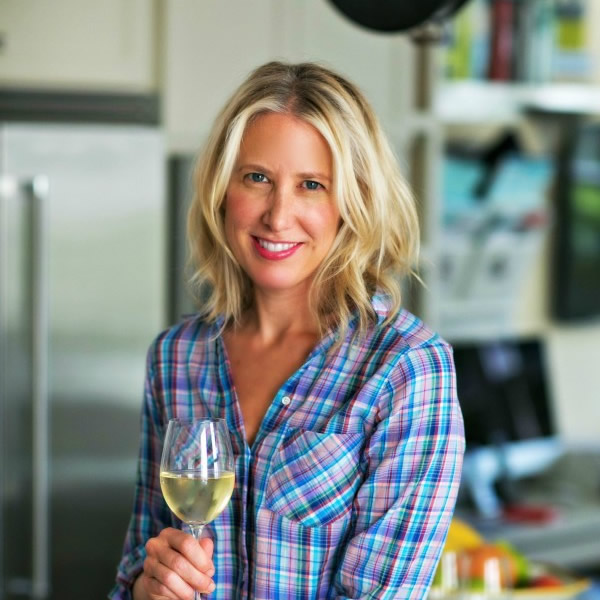It started with a bottle of wine. We fell for the pretty Belle de Magenta pet’nat from a woman-winemaker for the Rock Juice August collection, focused on female-driven wine projects. Then we learned that she is part of a progressive cooperative based on sharing resources, regenerative practices encouraging soil health and biodiversity, and enabling small farmers to succeed in an industry dominated by BIG wine. And we were inspired to learn more, having never seen anything like Nous, a union of small producers with big ideas about working together to restore vitality to the land and the people whose livelihoods depend on it.
Started by Sara and Alessandro Filippi, whose Soave vineyard is a member of the co-op, Nous requires its members to commit to “agriculture of light and carbon”, which they define as a healthy, natural, vital, bioenergetic agriculture that does not require any chemical product. Their farming practices go far beyond organic and even biodynamic into a philosophy much like regenerative agriculture, restoring carbon back to the soil and vitality back to the grapes…and ultimately the wine. People, THIS IS THE FUTURE!
Sara and her husband led the creation of the Nous partnership in 2015, based on the Vini di Luce philosophy developed by her husband Alessandro. Sara’s Soave estate on extreme volcanic soils is a founding partner of Nous, and its principles guide her work in the vineyards and in the cellar, neither of which see a single chemical input. Alessandro is the Vitologist of the whole Nous project, a term he coined to illustrate his role as oenologist who thinks beyond the taste of the wine to ensure its bioavailability as well. He says, “My wine must also be healthy, its nutritional principles must be easily and maximally absorbed by our body. Obviously such a wine must be natural and obtained without the use of any chemical substance.”
Allow us to dive in and get a little geeky, because this is the stuff that matters most in the healthiest vineyards… Vini di Luce / “the agriculture of light and carbon”, calls for farmers to look at how a forest works when seeking to achieve vitality in their vineyards (Have you seen “Fantastic Fungi?) Healthy forests are naturally regenerative, biodiverse, synergistic, and teaming with life, without adulteration — and they sequester carbon and retain water (climate change solutions have always been right under our feet!) This philosophy employs techniques that aim to restore the natural substances in the soil (much like the tenets of biodynamics and regenerative agriculture) and rebalance the ratio between carbon and nitrogen, in favor of the former.
How is this achieved in vineyards? In a nutshell, biodiversity is encouraged in the field by sowing useful plants between rows, which means more carbon is brought into the plants as food (remember photosynthesis!?) Biodiversity of plants and increased oxygen also summon beneficial insects to the vineyard.
The plants then release carbohydrates into the soil through their roots, feeding the multiplying microorganisms. These microorganisms in turn provide the plants with minerals and added nutrients that only they can break down and make available (synergy!) Plant compost, added microorganisms, herbal teas of medicinal plants, and dynamized (energized) water are also used for building soil, foliar nutrition and balancing subtle energies in the plants. You’ve also created a sponge-like environment in the soil where excess water is stored underground in water tables rather than running off. In the end, you have wines from grapes that are more vital, bioavailable, and truly have a sense of place (hello terroir!)
How does all of this translate into the glass? Purity of fruit and energy you can taste in these Magenta bubbles! It smells like juicy stone fruit on a summer morning. The bubbles are light, never intrusive, but they last. There is structure and the intense minerality typical of this volcanic terroir that carries to the finish. And in between, there are white flowers and stone fruit and flinty rocks. We love everything about this wine, with so much love and hope for the future instilled in every drop. How amazing would it be to see this supportive, conscious co-op model replicated in wine regions — and other agriculture — around the world? The Nous folks have already extended the model to other agricultural crops like wheat, olive oil and more, in Italy.
One final note to close: there are a lot of buzz words and marketing ploys in the wine world right now, playing into trends, insecurities, and fear. This is not how Rock Juice plays! We promise to stay the course and keep it real, supporting farmers and winemakers creating delicious, unadulterated wine and making ethical choices for the betterment of the land and their communities. We’ll continue to share the good juice along with our learnings, because we’re committed to truth and transparency in wine.







No comments yet.